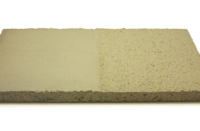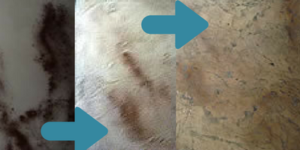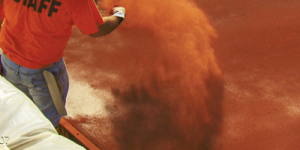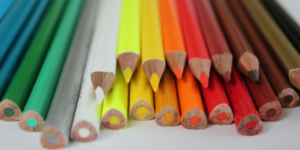Question: Why did I get black streaks on the surface of a stamped concrete slab after removing the release powder, and how do I get rid of them? Also, are there any better ways to remove release powder than using a power washer? That makes such a mess.
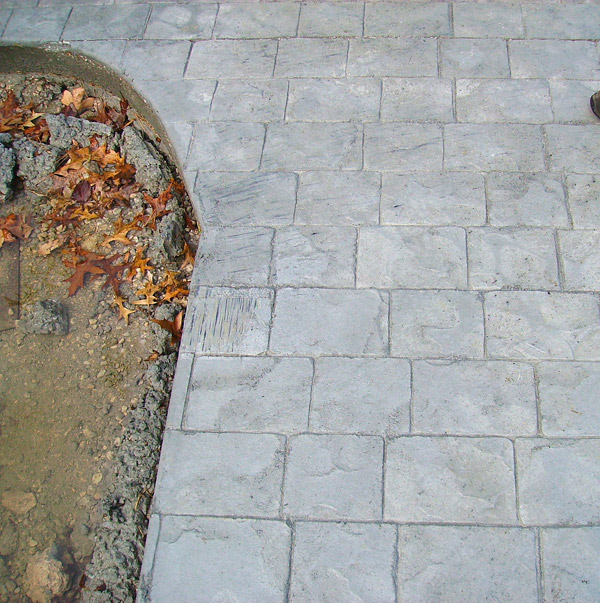
Colored release powder is a blend of pigments and hydrophobic (water-resistant) powders. Release powder’s primary purpose is to allow stamping tools to release cleanly from the concrete surface without sticking. Another benefit is the powder left behind on the concrete surface produces natural-looking color highlights, or what is known as antiquing.
Colored release powder is typically applied by hand until the concrete surface is covered with a thin layer of powder. Once the release powder is applied to the concrete, care must be taken to cleanly place and remove the tools. Any dragging or sideways movement of tools can lead to the colored powder streaking. If the concrete is still plastic, this streaking can be permanent just like the color highlights produced when tools are pressed into the concrete when stamping.
Another issue that can lead to streaking and marking is how the colored release powder is applied. Depending upon the manufacturer and raw materials used, some forms of release are heavier and stickier than others. The heavier varieties require a little more diligence when broadcasting the powder. Throwing too much or at too steep an angle can lead to color streaks and clumping on the surface.
Broadcasting small amounts at a time, almost parallel to the surface, produces the best results. Before applying, “fluff” the powder by rolling the pail, no matter the brand or type.
Removing these streaking blemishes can be difficult. It’s the same as trying to remove colored antique highlights from stamped concrete. First try scrubbing with soap and water. If that doesn’t work, try scrubbing with a diluted 20:1 water-acid solution. If scrubbing with soap or acid doesn’t remove the blemishes, covering them with stains, tinted sealers or color washes is always a last option.
When it comes to cleaning the surface and disposing the residual colored release powder, contractors typically power wash the material off the slab into the surrounding landscape or down the drain. This is becoming more of an issue as regulations are tightening in regard to what can be washed down the city sewer system or into developed landscaping. There are even some areas where the use of powdered release is banned.
In an effort to control the runoff of residual powder during the cleanup, one method uses fine sand to trap the powder, while it acts as grit to help thoroughly clean the surface. Mix any fine-grade silica sand with water to create a slurry. Apply the slurry randomly to the stamped surface. With a stiff broom or walk-behind scrubber, scrub the surface with the sand paste. The wet sand grabs the release powder, eliminating any dust, while it scrubs the surface to achieve the desired look.
Depending on the color and amount of release on the surface, the process may need to be repeated multiple times. Usually when I do this, one pass is sufficient to get a clean surface. The sand containing the release powder is easily scooped up with a shovel and disposed of in the garbage. The little color that remains can be washed off with a hose or power washer.
